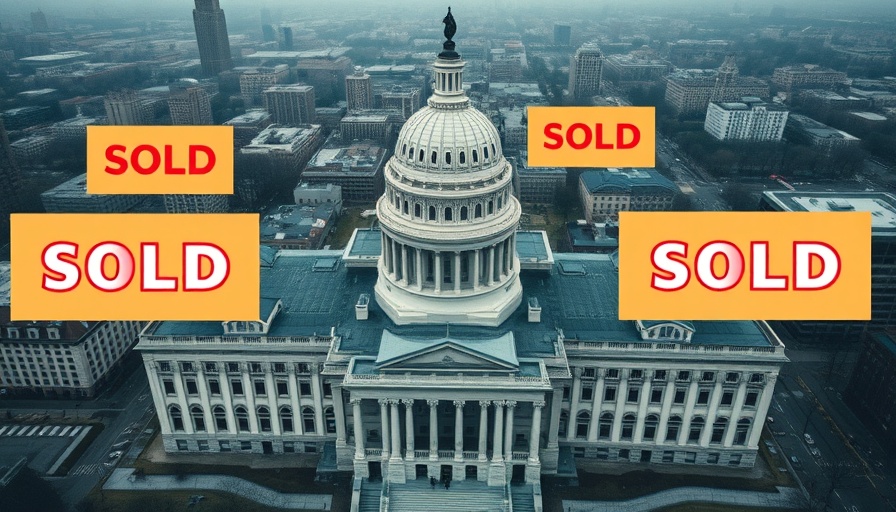
Revolutionizing Government Real Estate: The Impact of DOGE's Strategy
As the federal government engages in a sweeping liquidation of its real estate assets, the implications for the commercial office market are profound. Historically, government-owned properties have provided a stable component to the real estate sector. But with DOGE’s new initiatives under the General Services Administration (GSA), we’re witnessing an unprecedented wave of sales that could reshape market dynamics.
Current Trends in the Commercial Real Estate Market
The federal government has sold 13 buildings thus far, with DOGE announcing that another 68 are allegedly on the market. This ambitious plan, which aims to streamline government operations and cut costs, reflects a broader trend in commercial real estate, exacerbated by the lingering effects of the pandemic. Businesses are facing serious decisions about their office footprints, and the government’s actions could further shift the landscape.
The Future of Repurposing Government Properties
While the sale of government buildings provides potential for new owners, a key question looms: what will happen to these properties? The GSA has not disclosed the identities of buyers or the sale prices of these buildings, leaving local communities and stakeholders speculating about possible uses. Will these be converted into multifamily housing to address the housing crisis, or will some simply vanish from the market, adding to an already strained inventory?
Rethinking Office Space Post-Pandemic
The pandemic reshaped corporate real estate strategies. As businesses digested lessons learned from remote work, many companies have naturally downsized their physical office spaces. The influx of government properties into the market could be a double-edged sword, potentially flooding an already shaky market. Major corporations are re-evaluating their commitments to traditional office spaces, and this government sell-off might push them further away from investing in commercial real estate.
A Financial Windfall or a Costly Misstep?
The aim behind the government’s asset liquidation is clear: save taxpayer dollars. Estimates suggest that divesting these “functionally obsolete” buildings could yield over $430 million in savings annually. However, the long-term ramifications of such sales must be carefully scrutinized. With many entities tethering their operations to government facilities, these sales could lead to disruptions and operational chaos if not managed properly.
The Wider Economic Implications
In a broader economic context, these organizational efficiencies proposed by DOGE could set a challenging precedent. Lawmakers and corporate leaders must grapple with the balance of reducing costs while ensuring the vitality of the real estate market. Should commercial properties flood the market, this could drive down values and dissuade future investors from entering the arena.
Conclusion: Engage with the Changing Landscape
As these changes unfold, awareness and adaptation to the evolving office real estate landscape will be imperative for investors, business leaders, and policymakers alike. Understanding these dynamics—amidst the significant upheaval in traditional office utilization—will allow stakeholders to position themselves strategically in a post-COVID world. The DOGE initiative marks a pivotal moment, but whether it’s a breakthrough or a blunder remains to be seen.
For stakeholders looking to harness the opportunities presented by these potential shifts in the commercial real estate market, staying engaged with these developments is critical. Follow industry news, participate in discussions, and advocate for strategic planning that aligns with these significant changes in the government’s approach to real estate ownership.
 Add Row
Add Row  Add
Add 




 Add Row
Add Row  Add
Add 

Write A Comment